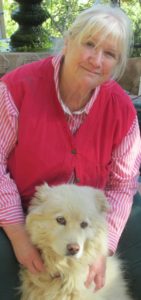
I have a sappy, emotional mug. I love it. It says, “When it’s dark, look for the stars.” So, in the spirit of this season of love and light, I want to share one of my most treasured holiday traditions with you, dear readers. The Hubble Space Telescope Advent Calendar. Let’s go! To the stars and beyond!
A LITTLE HISTORY
In 1946, Lyman Spitzer, a professor at Yale, published a paper called Astronomical Advantages of an Extra-Terrestrial Observatory. It explained that the Earth’s atmosphere blurs and distorts light coming from stars. Even the most precise and advanced telescopes on the ground cannot escape this phenomenon, but a telescope in orbit can. We needed to have a telescope in space.
The first Hubblescope was launched April 24, 1990, from Space Shuttle Discovery. Unfortunately, the edges of the primary mirror were ground too flat, so the images returned to Earth were fuzzy. New optics had to be built, and guess what? It was built at the Jet Propulsion Laboratory—JPL—in Pasadena. We Topangans have a bit of history with that.
In 1992, there was widespread violence, looting and arson throughout L.A. after a jury acquitted four police officers involved in the beating of Rodney King. I remember sitting on my horse out at the Parker Mesa Overlook, watching Los Angeles burn below. It was so surreal, watching this urban conflagration, a girl on a horse above it all in the pastoral safety of Topanga.
The next morning, I arrived at Topanga Elementary School where I taught astronomy once a week, to take the fifth graders on an arranged trip to the JPL, only to find Topanga Elementary had been badly vandalized. I told the kids to say a prayer for those who had so much anger and not to let it dampen our wonderful trip ahead. Look for the stars!
The Topanga fifth graders saw the first replacement mirror for the Hubble Telescope being built, right in front of their eyes. Technicians dressed in white, hooded paper suits worked diligently behind a thick glass wall in a 30-foot-high room with huge air filters over the top. NO DUST ALLOWED! It was like looking into an aquarium, with air instead of water and humans instead of fish. We watched the scientists working on COSTAR, the set of optics that would allow the telescope’s instruments to work properly.
The Hubble was serviced in a 1993 Shuttle mission that included five space-breaking spacewalks to make the repairs. The images coming back from the newly adjusted telescope were, and have continued to be, spectacular. I am such a NASA groupie.
THE HUBBLE ADVENT CALENDAR
Alan Taylor is a senior editor and oversees the photo section of The Atlantic Monthly. He is the person who has put this calendar together for the last 12 years. Thank you, Alan! The word “advent” comes from the Latin word “adventus,” which means arrival. What has arrived from the Hubblescope is miraculous.
The Hubble has allowed us to penetrate deep into the heavens above our beautiful Earth. We have seen baby photos of the Universe. We have learned the age of the Universe: 14 billion candles are needed for its birthday cake. We have learned the Universe is expanding faster than we thought. We have explored super massive black holes. We know better where to look for life. We discovered Dark Matter. According to space.com, “Dark energy, is now thought to make up 74 percent of the combined mass-energy in the entire universe and it remains an utter enigma. Solving this mystery could revolutionize (again) physics as we know it.”
Each day, from December 1 to December 25, a new photo from the Hubble Space Telescope is added. You can check out this special advent calendar every day, now through Christmas, at https://www.theatlantic.com/photo/2019/12/2019-hubble-space-telescope-advent-calendar/602827/ It’s a wonderful thing to do with your family, friends or just by yourself. It fills the soul with wonder.
THE FUTURE OF HUBBLE
New technologies are ready to continue Hubble’s missions. The James Webb Space Telescope is due to be launched in 2021. According to Wikipedia, “The JWST will provide greatly improved resolution and sensitivity over the Hubble, and will enable a broad range of investigations across the fields of astronomy and cosmology….” Webb will be the premier observatory of the next decade, serving thousands of astronomers worldwide. It will study every phase in the history of our Universe according to NASA.
On track for the 2030s is the LUVOIR Telescope project. The LUVOIR is a large, ultra-violet optical infrared surveyor telescope whose power will dwarf that of the Hubble. Futurists are scrambling for funding for things like the OWL-MOON telescope, which would be a ground telescope on the moon! A place with no atmosphere! It would be able to see the glint of an ocean on a faraway planet. A favorite of mine is the proposed Nautilus, actually 14 different telescopes in space merging multiple images to study life elsewhere in the universe.
WISHING YOU PEACE
Astronomy has come a long way from the night of the Nativity when shepherds and wise men followed the bright star over Bethlehem, which astronomers postulate may have been a conjunction, a “lining up behind each other” of Venus, Jupiter and Regulus, the brightest star in the constellation Leo. Two planets and a star, symbols of Love, King, and the Lion of Judah. Advent…. The arrival, the coming. I hope you enjoy the calendar.
Merry Christmas and Happy Holidays, Dear Readers. May your lives be filled with the Light of Love, and remember, When it’s dark, look for the stars.
Vamos a Ver!



